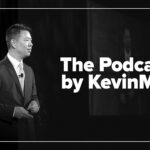It seems unlikely that Paramount Studios released Gladiator Part 2 immediately after the presidential election to diffuse political rancor. They didn’t intend to provide a cathartic release for the nation’s pent-up frustrations. The goal wasn’t to help remove the hissing American tea kettle from such a divisive political flame.
Hollywood made the film to entertain us and make some money in the process. The studio probably released it during the holiday season, when moviegoing reaches its peak, in order to maximize profits. The sequel to a well-known brand would be expected to rake in handsome returns. The fact that the film was released just weeks after the November election was merely a coincidence, rather than an intentional political allegory.
For a modern-day sport to provide widespread catharsis, it would require massive popularity and distribution—far beyond the influence of a single film. Only American football has that kind of size and scale and the potential to diffuse tensions, whether they be personal or political.
Much like the Roman games, the sport’s appeal derives from an addictive combination of tension and violence. Together, these potent ingredients create the perfect atmosphere for fans to chant, yell, and blow off some of their frustrations.
The rules of the game create part of the drama. On almost every ball possession, the offense faces a challenging third down, which they must “convert” in order to “keep the drive alive.” The existential stakes were similar for gladiators: either they would successfully sidestep the charge of a Bengal tiger and live, or they got clipped by an outstretched claw, were injured, and died.
Adding violence to the mix makes football absolutely riveting. Today’s players are incredible anatomical specimens. They are among the strongest and fastest human beings on the planet. The sheer impact of their full-speed collisions is really hard to fathom. It’s almost impossible to divert your attention from such brutality and not marvel at the courage and self-sacrifice required to play in the NFL today.
Despite football’s incredible popularity, there may be a threat looming on the horizon. The way Americans consume media is becoming increasingly fragmented and has forced the NFL to rethink how it can continue to reach its enormous audience.
Can the NFL distribute its product in this new post-cable environment without alienating the fans, many of whom are still struggling with the effects of inflation? How can they remain accessible and user-friendly without triggering frustration? Forcing working-class viewers to subscribe to multiple streaming platforms is bound to create resentment for the league and its corporate elites.
To prevent losing touch with its fans, NFL executives should reflect on the lessons passed down by their Roman predecessors. Roman patricians understood that public games were more than just entertainment. The games promoted social cohesion and helped forge cultural identity. That’s why gladiatorial contests and chariot races were typically free to attend. Sometimes, the spectators even received free food and drinks, so they could wash down a nice bloody execution with some fresh fruit and possibly even a slice of pizza.
Obviously, there’s a key difference here. Gladiators were generally slaves seeking emancipation or political prisoners with no choice but to participate, whereas NFL players are paid millions of dollars. So, the overhead—the cost of doing business—was quite different.
Nobody can blame the NFL for wanting to make money, but if they keep pushing fans to subscribe to more and more streaming services, there’s no telling how the brand’s popularity may suffer. There’s a risk that charging fans to watch marquee games will make the league look greedy. Take, for example, the Christmas Day lineup. Outside of the local markets, it was impossible to watch the games without a Netflix or NFL Plus subscription. Likewise, one of this year’s wild-card games will only be available through an Amazon Prime subscription.
While it may still be a long way off, if the trend continues, working-class families may eventually have to make difficult decisions. They shouldn’t have to skimp on groceries or worry about filling up the gas tank, just so they can have full access to the NFL playoffs.
Hopefully, the NFL won’t let it get to the point where a patriarch must decide between buying Christmas tree ornaments and some eggnog or a ticket to watch the Super Bowl on television. If they do, fathers may begin to think twice about allowing their sons to try out for football, and then we would all miss out on an opportunity to find the next generation of gladiators.
Eric Dessner is an ophthalmologist.





















![Preventing physician burnout before it begins in med school [PODCAST]](https://kevinmd.com/wp-content/uploads/The-Podcast-by-KevinMD-WideScreen-3000-px-4-190x100.jpg)



![Why high-quality embryos sometimes fail to implant [PODCAST]](https://kevinmd.com/wp-content/uploads/Design-3-190x100.jpg)
